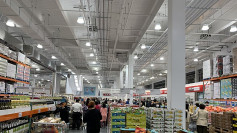U.S. retail sales posted a surprising but welcome rally in January, driven forward by an increase in sales of building materials and discretionary spending.
Retail sales rebounded 1.1 percent in January after a downwardly revised 2.3 percent plunge in December, according to the U.S. Department of Commerce. Sales reported in January, however, excluded automobiles, gasoline, building materials, and food services, which are referred to as core retail sales.
Core retail sales correspond most closely with the consumer spending component of the gross domestic product (GDP). These were previously reported to have fallen 1.7 percent in December 2018. This number has been revised downward and will have a downward impact on the federal government's fourth-quarter GDP estimate.
In January, online and mail-order retail sales increased 2.6 percent, the biggest gain since December 2017. Sales at building material stores increased 3.3 percent, the most since September 2017. But receipts at auto dealerships tumbled 2.4 percent in January, the largest drop since January 2014, after gaining 0.3 percent in the prior month.
Receipts at service stations fell 2.0 percent reflecting cheaper gasoline prices. There were also declines in sales at clothing and furniture stores, as well as electronic and appliance shops.
Discretionary spending rose in January, with sales at restaurants and bars advancing 0.7 percent and purchases at hobby, musical instrument and book stores jumping 4.8 percent, the largest increase since January 2013. Sales at food and beverage stores gained the most since April 2016.
Analysts, however, pointed out the strong retail sales report for January won't change expectations for a sharp slowdown in economic growth in the first quarter. Disappointing December data presaged this prediction.
The government lowered data for December with the result retail sales fell 1.6 percent instead of only 1.2 percent as first reported. Unfortunately, the drop in December was the largest since September 2009 when the economy was emerging from the Great Recession.
Faltering retail sales also reflected the decelerating U.S. economy. In February, the federal government reported economic growth at a 2.6 percent annualized rate from October to December 2018.
Reports on a higher trade deficit in this span and weaker construction spending led economists to predict the fourth quarter GDP growth estimate will be revised lower when the government publishes its revised figures later this month.
As it stands, GDP growth estimates for the first quarter of 2019 are below a 1.5 percent pace. The government reported the economy created only 20,000 jobs in February, the fewest in nearly 1-1/2 years.






